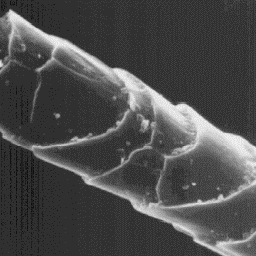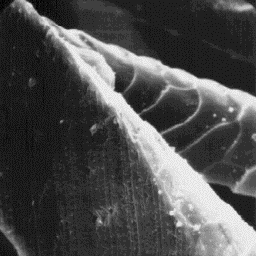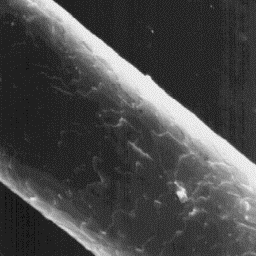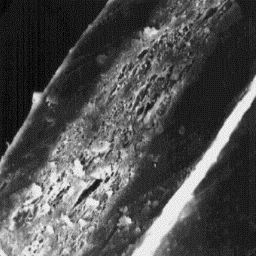 Uncia uncia
Uncia uncia
-----------
English: Snow leopard, ounce
German: Scheeleopard, irbis
French: Leopard de neigas
Spanish: Leopardo de nieve
Distribution areas
------------------
The snow leopard can be found in the
mountain areas of Central Asia, from
Turkestan to the Lake Baykal and in the
southeastern direction as far as Himalaya
mountains.
Description of the fur
----------------------
The skins are from 103 to 125 cm long;
the tail is about 80 to 105 cm long. The fur coat is soft and hairy. The
winter coat is white with brown or grey-brown elliptical spots mainly on the
back area. In the summer the coat is light-grey in colour and the spots are
dark-brown or even black. The guard hairs which are up to 70 mm long, are
straight. The fine fur fibres are moderately curled.
|
|
 Uncia uncia
Uncia uncia
-----------
English: Snow leopard, ounce
German: Scheeleopard, irbis
French: Leopard de neigas
Spanish: Leopardo de nieve
Structure of the hair
---------------------
The skin surface has a regularly grooved
microscopic structure with narrow hair
follicles with raised edges. The average
follicle contains a cluster of hair shafts.
The fine fur fibres are circular in
cross-section, with a diameter of 5 to 20 The cuticular structure
µm. The cuticle is covered by cornet-like of the fine fibres, 2000x
scales with a smooth, or sometimes grooved
surface and straight scale margins. These fine fibres are non-medullated.
|
|
 Uncia uncia
Uncia uncia
-----------
English: Snow leopard, ounce
German: Scheeleopard, irbis
French: Leopard de neigas
Spanish: Leopardo de nieve
The intermediate fibres are 20 to 40 µm
in diameter. Their cross-sectional outline
is either circular, or elliptical and the
cuticular scales are even, tile-like in
shape, or crenated, tile-like in shape. The
scale surface is smooth, and scale margins
are either straight, or crenated. The
medulla is narrow, sometimes longitudinally
broken, and central symmetrical-shaped in Transverse section
cross-section. The overall structure is of of an intermediate fibre, 1500x
the non-regular type with a foam-like or an
amorphous detailed structure to the infilling substance.
The guard hairs are from 40 to 60 µm in diameter and have and elliptical
cross-sectional outline. The cuticular scales are even, tile-like in bottom
part, end elliptical in other parts, of the shaft. The scale surface is
smooth and margins are usually rippled.
|
|
 Uncia uncia
Uncia uncia
-----------
English: Snow leopard, ounce
German: Scheeleopard, irbis
French: Leopard de neigas
Spanish: Leopardo de nieve
The medullary column is narrow,
longitudinally broken and central sym-
metrical-shaped in the cross-section. The
medullar type is non-regular and the
infilling substance is of the foam-like
structure.
The cuticular structure
of a guard hair, 1000x
|
|
 Uncia uncia
Uncia uncia
-----------
English: Snow leopard, ounce
German: Scheeleopard, irbis
French: Leopard de neigas
Spanish: Leopardo de nieve
Transverse section
of a guard hair, 1000x
Numerical code for snow leopard skin structure
----------------------------------------------
Surface of the skin: 2-5-3
Fine fur fibres: 1-5-1.2-1-4-0-0-0-0-5.21-8.45
Intermediate fibres: 2.1-2.4-1-1.2-3-2-1-16-5.8-20.41-30.65
Guard hairs: 2-4.2-1-2.1-3-2-1-16-5-40.61-50.71
|




